The kids will have a blast with these Animals in Winter printable! It’s the best way for them to learn about cold weather animals.
Even though there isn’t much snow around this week (is there ever in Southern Alabama?), the temperatures have been pretty cold, and we’ve been learning all about animals in the winter.
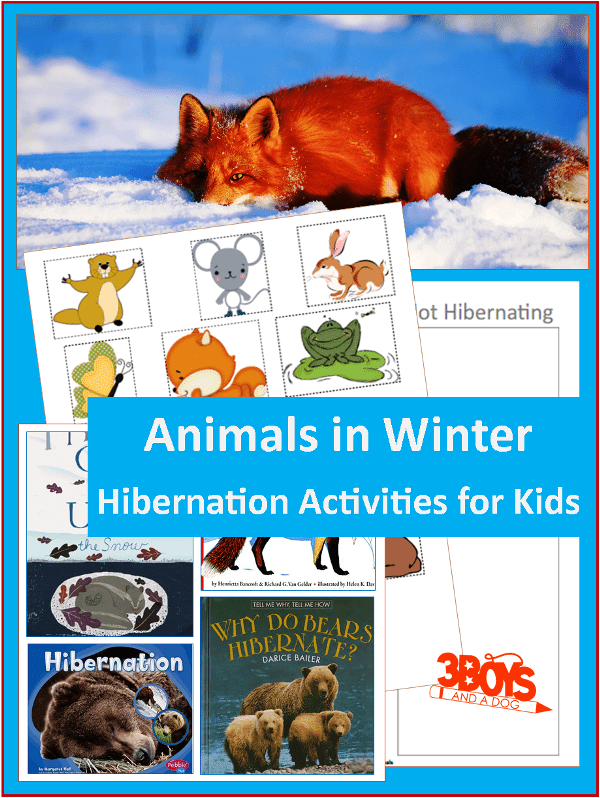
Books about Hibernation for Kids:
You and your preschooler will love any of the following books! Add to your library 🙂
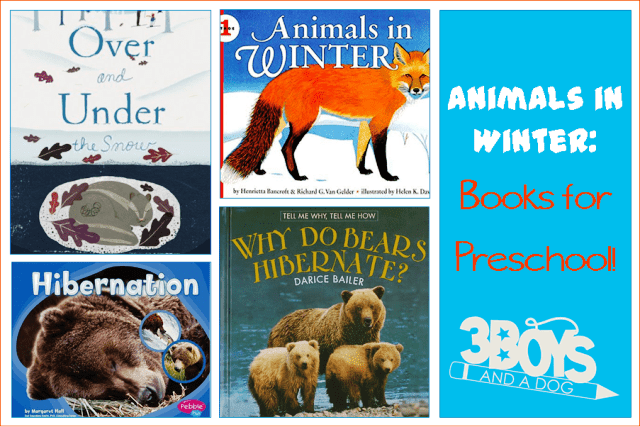
Animals in Winter (Let’s-Read-and-Find-Out Science)
How and Why Animals Prepare for Winter (How and Why Series)
Winter Sleep (a hibernation story)
The text in the bear book was a little too complex for my kids (ages 2-3), but they really enjoyed the pictures and seeing different types of bears. They loved the Animals in Winter book, especially the page that talked about the groundhog building a bathroom under the ground!
I spotted a great game over at Teach Preschool where kids climb into a “bear den” to hibernate. When the timer buzzes, winter is over and the kids all come roaring out the cave. I knew our kids would love that as well, so we set up a little tent/cave.
Heading into the cave for winter. The little bears “ate” lots of berries and other bear food before heading to their cave for the winter.
After the “bears” had been in the den for about 10 seconds, I would yell “Spring Time” and all the bears would come out and s-t-r-e-t-c-h. It was so cute! Then they would all yell, “It’s time to hibernate again!” We had to play many, many times! It was worth it to hear them walking around saying “hibernate” though!
Afterwards, we talked about other animals that hibernate, using Animals in Winter as a reference. Kelli made up this perfect chart to go with the book, so be sure to grab yours (free printable). The printable contains a chart for “Hibernating” and “Non-hibernating” and then a number of animals to cut out and sort into columns. Perfect for winter learning!
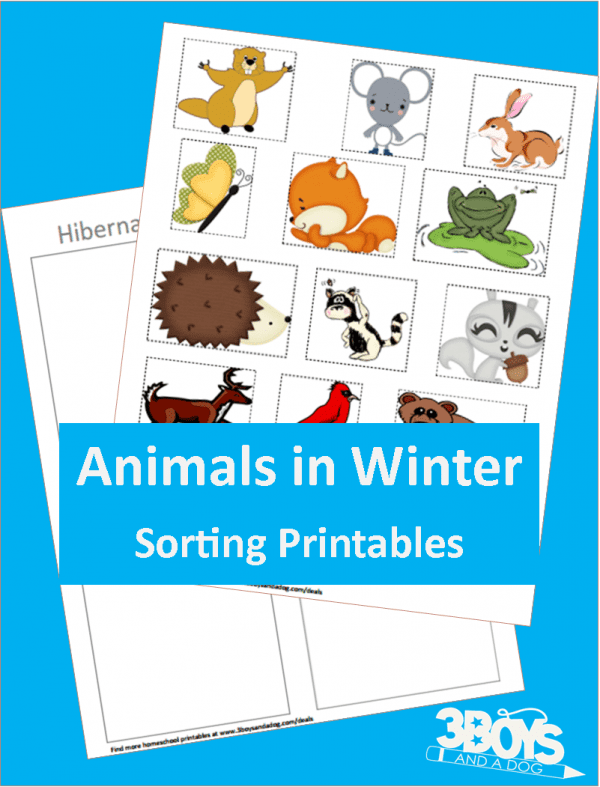
My 3 year old loved matching the little pictures to the animals in the book and then placing in the appropriate column.
What are some fun facts about animals that hibernate in the winter?
Animals that hibernate during the winter have some exciting and even unexpected habits.
For example, bats and ground squirrels undergo torpor, a sleep-like state in which their body temperature drops and their metabolism slows down, allowing them to conserve energy.
Furthermore, hedgehogs and wood frogs can survive temperatures up to -5 degrees Celsius by partially freezing themselves!
The process of supercooling starts when they release certain types of antifreeze proteins from their cells into body fluids. The proteins form an ice-blocking barrier enabling the animals to survive subzero temperatures.
Finally, bears are not true hibernators; instead, they enter a period of profound lethargy where their body temperature does not fall significantly, but their breathing rate reduces dramatically.
These facts demonstrate why hibernation is an incredibly adaptive response that helps animals survive cold temperatures and food shortages in the winter.
How do animals who hibernate not get hungry?
Many species of animals partake in a type of deep sleep called hibernation that enables them to survive for extended periods without any food.
This is accomplished through energy conservation, as the metabolic rate and body temperature drop significantly during hibernation.
As a result, these animals require only small amounts of energy from fat reserves to sustain themselves until the weather becomes more suitable for sustenance-seeking.
The state of near dormancy reduces their appetite and thus the need for food drastically, which explains why an animal does not typically get hungry when it hunkers down in its den during winter.
When do animals start the hibernation process?
Hibernation is an essential adaptation for many species of animals that allows them to survive winter and unpredictable weather patterns.
Although the specifics of the timing of hibernation varies by species, typically, animals enter the hibernation process when cold temperatures limit food availability, and energy reserves become low.
During this period, animals enter into a state of reduced metabolic activity. Their body temperature and respiratory rate slow considerably, allowing them to conserve energy stored in their fat deposits.
Hibernation can last several months or even up to 8-9 months, an exceptional capacity unique to animals since it enables them to survive in harsh climates without recourse.
What animal hibernates the longest?
The animal species that hibernate the longest are bears. Considered winter sleepers, they typically enter a state of dormancy when temperatures drop, and food sources become scarce late in autumn.
During this time, bears retreat to dens where their body temperature and metabolic rate slow dramatically.
Depending on the species, adult bears will usually remain dormant for up to seven months until the warmer weather returns.
Preparation for hibernation may begin weeks in advance as bears build up fat reserves for sustenance during their extended period of suspended animation.
After reemerging from its winter den, a bear’s body will go into overdrive, attempting to regain the strength lost in its extended slumber.
Will animals wake up when they’re supposed to hibernate?
For some animals, hibernation is an important adaptation for surviving the cold winter months. But, despite anecdotal evidence suggesting animals may awaken during their hibernation cycles, the scientific literature on this phenomenon is still limited.
However, there have been recorded cases of small mammals reportedly waking up prematurely from hibernation to take advantage of changes in available food sources or increased temperatures. In some instances, they even reverted to their typical daily activities while still exhibiting symptoms of hibernation, such as a lowered body temperature and decreased heart rate.
Despite these sporadic occurrences, researchers are still working to uncover the exact mechanisms that guide when and why animals stir from their slumber.
What do bears eat before going into hibernation?
Bears are well-known for their ability to ensure their survival through hibernation. As part of this process, they need to eat large amounts of food to build up a sufficient layer of fat for the long winter months ahead.
This is why bears consume huge amounts of calories before their hibernation period begins. But what kind of food do they eat?
Fruits and vegetables are primary fixtures in the diet of omnivorous species such as black bears, although insects and fish can constitute up to 90% of the diet for grizzly bears living near streams or rivers.
Ultimately, whatever will bring them lots of energy, such as honey and nuts, is what a bear will eat before hibernation.
What is the shortest hibernation time?
The shortest known hibernation period is believed to be the American Groundhog, who sleeps for only 4 weeks. Studies suggest that the exact length of time that groundhogs spend in hibernation can vary due to temperature-related factors and the availability of food sources.
Hibernation times for these animals also vary geographically, with groundhogs sometimes remaining asleep up until 14 weeks.
During this time, groundhogs experience a significant decrease in body temperature, heart rate, and metabolism and take restorative breaths every few minutes.
Upon emerging from hibernation, groundhogs depend on systems such as fat mobilization and lean body mass preservation to combat lean tissue loss caused by their reduced energy expenditure during this period of extended sleep.
Shop My Learning Printables:
The following homeschool picks of mine can be found in my shop. Simply click the image that interests you!
More Fun Hibernating Activities:
- I am loving this Sleep Well, Bear preschool activity from Teaching 2 and 3 Year Olds!
- A Little Pinch of Perfect has an adorable Hibernating Bear Paper Plate Craft for your kids to do!


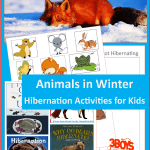











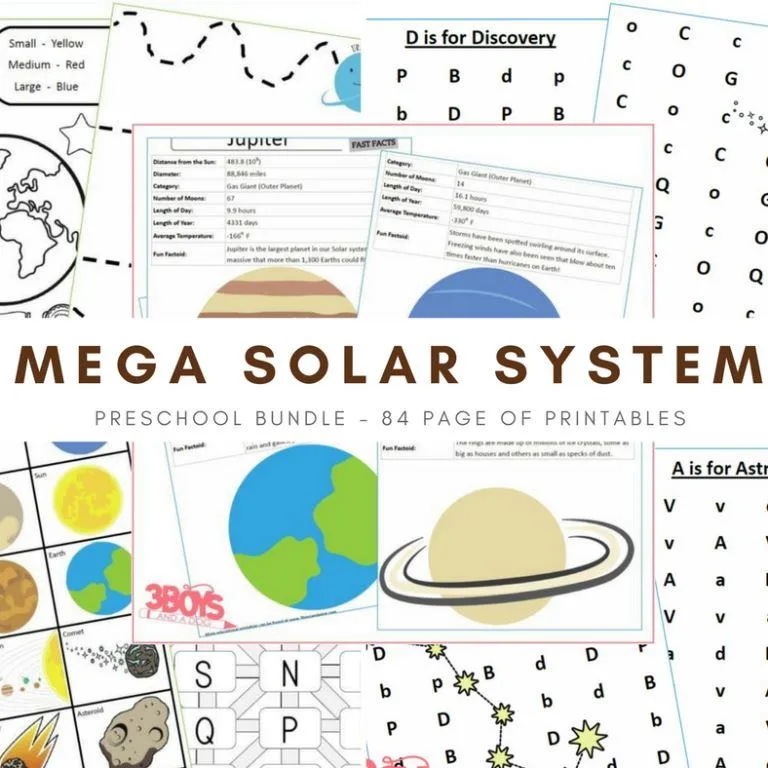
Groundhog Day Printable Book - CrystalandComp.com
Thursday 26th of January 2023
[…] Winter Animals (groundhog included) […]
Dawn Rothbauer
Sunday 10th of January 2021
I love hibernation ideas.
Susie @Bowdabra
Saturday 2nd of February 2013
Thanks so much for coming by and visiting our blog and sharing your awesome project. Come by again and link up some more awesome projects in our Saturday Showcase again next week!
Have a good week! Susie@bowdabra http://bowdabrablog.com/2013/02/02/saturday-showcase-craft-project-linky-18/
Carissa
Tuesday 29th of January 2013
it's hard to find fun activities to do in the winter! thanks for sharing
michelle
Tuesday 29th of January 2013
Really cute ideas! I wish I'd had those books when we did an Alaska animals unit recently! http://eatingthenibblybibs.blogspot.com/2013/01/mail-fromalaska.html